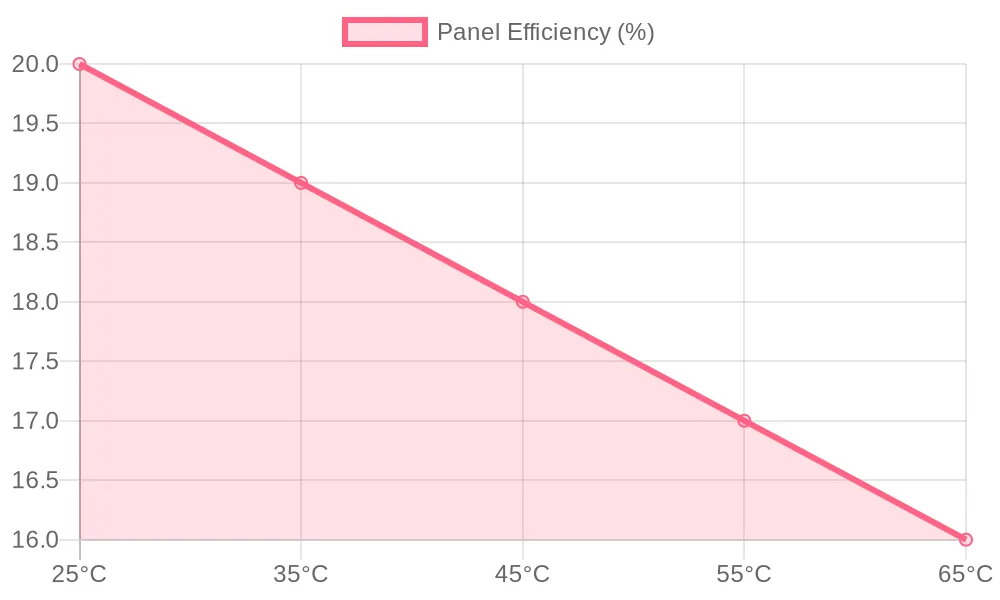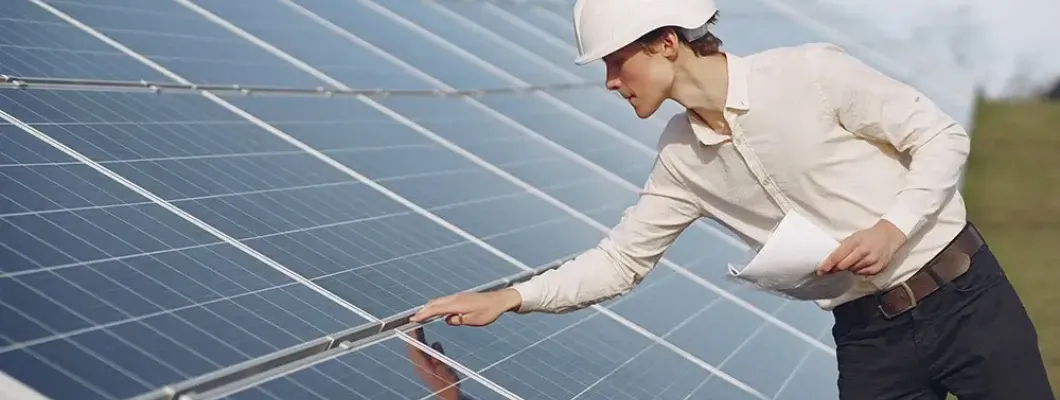Introduction: Beat the Heat to Boost Your Solar Power
Picture this: it’s a scorching summer day, your solar panels are soaking up the sun, but your energy output is... meh. Sound familiar? Heat can quietly rob your panels of up to 15% efficiency, slashing your savings or leaving your off-grid setup short. Why does this happen, and how can you fight back? In this 2025 guide, we’ll break down the science behind heat’s sneaky impact, uncover what’s making your panels overheat, and share practical, cutting-edge solutions to keep them humming. With new tech like perovskite cells and AI monitoring hitting the scene, now’s the perfect time to make your solar system heat-proof. Let’s dive in!
The Science: Why Heat Hurts Your Solar Panels
Ever wondered why your panels seem to slack off when the mercury rises? It’s all about the physics of solar cells. Solar panels use silicon to turn sunlight into electricity through the photovoltaic effect. But heat throws a wrench in the works.
Here’s the deal: high temperatures mess with the silicon’s “bandgap”—the energy barrier that lets electrons flow as electricity. When it’s hot, this barrier shrinks, causing electrons to recombine instead of producing power. This drops the panel’s open-circuit voltage (Voc) and filling factor (FF), which measures how efficiently current flows. The result? Less power output.
Most panels have a temperature coefficient of -0.4% to -0.5% per °C above 25°C. So, if your panel hits 45°C (not uncommon in summer), efficiency could drop 8-10%. For a 300W panel, that’s 24-30W lost! Over time, heat also speeds up panel aging, with efficiency declining 0.5-1% yearly. Thin-film panels fare slightly better (-0.2% to -0.3%/°C), but no panel loves the heat.
Chart: Efficiency vs. Temperature

External Culprits: What’s Making Your Panels Hot?
It’s not just the sun baking your panels. Several external factors turn up the heat, making efficiency losses worse:
- Hot Climates: In places like Arizona or tropical regions, panels can hit 50-70°C, cutting output by 10-15%.
- Poor Installation: Panels glued flat to a roof trap heat, adding 5-15°C compared to ground-mounted systems with airflow.
- Dust and Debris: Dirt, bird droppings, or leaves absorb heat, creating “hot spots” that damage cells and reduce output by 3-7%. Hot spots can heat specific areas by 20°C, risking permanent damage.
- Aging Panels: Older panels (10+ years) lose heat dissipation due to worn backsheets or PID (Potential Induced Degradation), where voltage stress worsens performance in heat.
Case Study: A California homeowner found their panels lost 10% output due to dust buildup. A quick clean restored performance, proving maintenance matters.
Optimization Strategies: Keep Your Panels Cool and Productive
Don’t sweat the heat—here are six proven ways to boost your panels’ performance, blending tried-and-true tips with 2025 tech:
- Pick Heat-Resistant Panels
Choose panels with low temperature coefficients, like Heterojunction (HJT, -0.26%/°C) or TOPCon (-0.3%/°C). These outperform standard silicon in hot climates, saving 3-5% output at 40°C. Curious about panel types? Check our guide on choosing the right solar panels. - Boost Ventilation
Mount panels with a 4-8 inch gap from the roof or use tilted racks (15-30° steeper in summer). This cuts panel temps by 5-10°C, boosting output 2-5%. A Texas user saw an 8% gain after switching to elevated mounts. - Add Cooling Tech
- Passive: Reflective coatings or heat sinks ($50-100/panel) reduce temps by 5°C.
- Active: Water-cooling systems (for big setups) can lift efficiency by 10-15%. A desert solar farm reported a 12% yield increase with water cooling.
- Clean Regularly
Clean panels every 3-6 months (monthly in dusty areas) using soft brushes and deionized water. This restores 3-7% output and prevents hot spots. Learn more in our solar troubleshooting guide. - Use Smart Monitoring
AI-based apps or SCADA systems track panel temperature and output in real time. One user caught a 10°C overheat due to blocked ventilation, fixing it to save 8% output. For more on system optimization, see our solar system optimization tips. - Integrate Energy Storage
Pair panels with LiFePO4 batteries to store excess power, smoothing out heat-related dips. This is key for off-grid setups in hot climates.
For deeper insights on panel efficiency, check EnergySage’s Solar FAQ for authoritative data on temperature coefficients.
2025 Trends: The Future of Heat-Resistant Solar Tech
Heat-resistant tech is heating up (pun intended)! Here’s what’s coming in 2025:
- Perovskite Tandem Cells: These hit 30% efficiency and handle heat 20% better than silicon. Pilot projects are rolling out now, per Nexamp’s 2025 Predictions.
- TOPCon and HJT Panels: With lower temperature coefficients, they’re expected to grab 20% market share by 2026.
- Integrated Cooling: New panels may include built-in phase-change materials, cutting temps by 10-15°C.
- AI Optimization: Predictive models adjust panel tilt or cooling based on weather forecasts, boosting yields by up to 5%.
- Storage Synergy: 28% of solar homes will add batteries in 2025, stabilizing output in heat.
Conclusion: Power Up Your Panels Against Heat
Heat may be a solar panel’s kryptonite, but you’ve got the tools to fight back. From choosing HJT or TOPCon panels to boosting ventilation, cleaning regularly, and tapping into 2025’s AI and perovskite tech, you can keep your system humming even in scorching summers. Start with one tip—maybe a quick clean or a ventilation check—and explore heat-resistant panels for your next upgrade. Got a hot solar story? Share your heat-busting tips or challenges in the comments!
FAQ: Your Top Solar Heat Questions Answered
What’s the ideal temperature for solar panels?
25°C. Every 1°C above this cuts efficiency by 0.4-0.5%. At 45°C, expect a 10% drop.
How often should I clean my solar panels?
Every 3-6 months, or monthly in dusty areas, to recover 3-7% output. Use soft brushes to avoid scratches.
Does heat shorten panel lifespan?
Yes, prolonged heat speeds up degradation (0.5-1%/year). Cooling and maintenance slow this down.
Are heat-resistant panels worth it?
HJT/TOPCon panels cost 10-20% more but save 5-10% output in hot climates, paying off in 2-3 years.




Leave a Comment